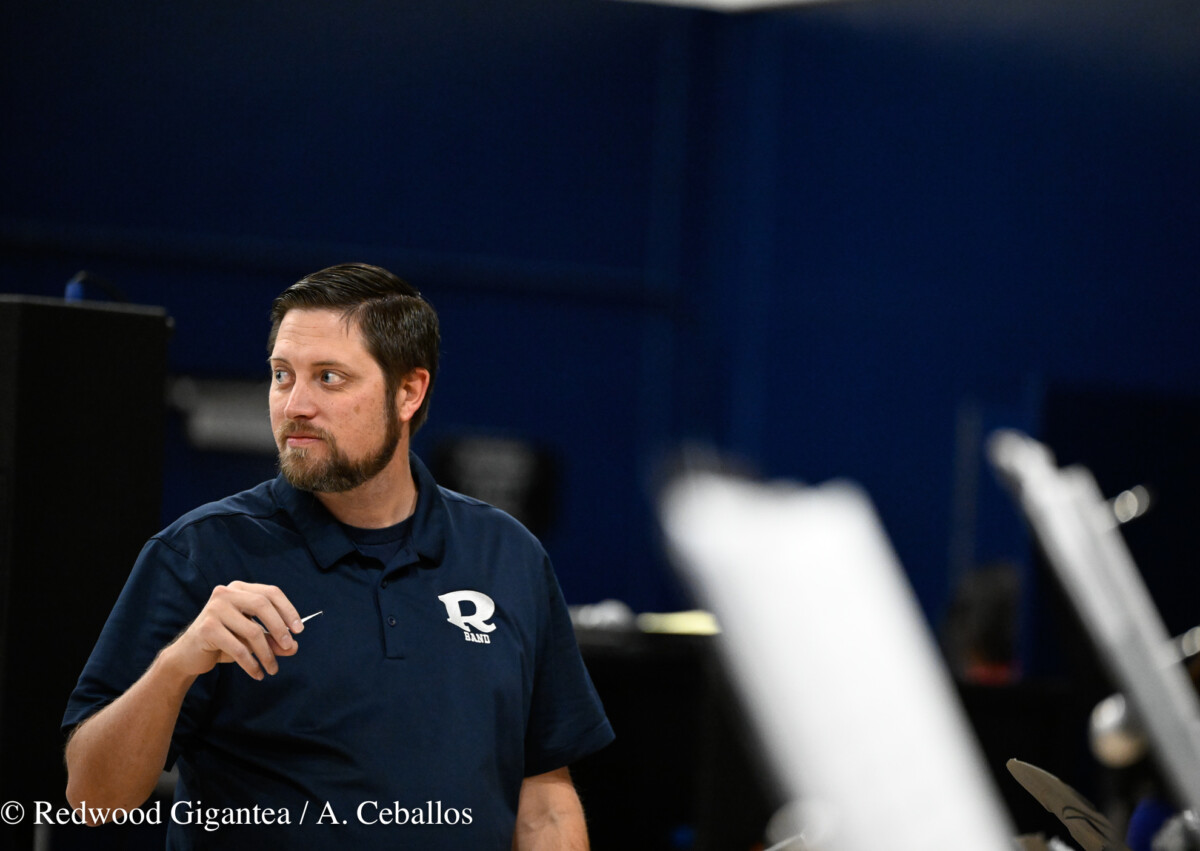Studies have shown that music can have a huge impact on mental health. One’s mood tends to reflect the type of music one listens to, and listening to a specific genre of music can change or improve one’s mental health.
By: Anex Estrada
During COVID-19, the feeling of being isolated because of a global pandemic can lead to feeling stressed, sad, and anxious. Turning to music was a coping mechanism many used to disregard what was going on in the world.
Typically, the type of music they’re listening to is also affected depending on the mood someone feels. For example, when the average person is in a good mood, they tend to listen to upbeat music that contains the good energy they have going on.
Most studies show that music can raise your mood and help fend off depression. Which typically highly depends on the type of music you listen to and the person listening. If a person listens to a sad song while they’re sad, it can comfort them as they can feel connected to the lyrics, depending on what the lyrics imply or if the lyrics relate to the unfortunate situation.
Others may feel that sad music may lead them to feel more depressed, as it can boldly highlight their situation and lead to feeling even worse than before.
Participating in music activities with others, like singing, dancing, attending concerts, or playing an instrument, can create a sense of community and provide social support, which can be beneficial for mental health.
The Positive Side of Music
According to eglendalelac.org, “Studies have shown that listening to music can reduce anxiety, blood pressure, and pain as well as improve sleep quality, mood, mental alertness, and memory.”
Listening to music can reduce cortisol. Which is a stress hormone that can help control your blood sugar, blood pressure, and metabolism.
Mrs. Gayna Hulstine, who has been teaching Health at Redwood for 2 years, said, “Music can help people express emotions they might struggle to put into words, making it a great tool for emotional health and coping. Often, people struggle to find the words to express how they feel, and the wonderful thing about music is that all genres focus on emotional expression.”

Photo A.Ceballos/Gigantea
Music can motivate people to study, work out, or even do multiple activities. For example, listening to classical music or music that has a beat rate of 60BPM (Beats Per Minute) can calm the brain and increase its processing of information.
Music can do multiple things for the body, mentally and physically. Music can boost your mood, making you feel more confident or more cheerful. Calming musical lyrics can make you feel relaxed and at ease. Sometimes, certain music can even make your body want to dance to the song playing, typically because of the beats that are consistent throughout the piece.
Mrs. Hulstine continues with, “Music plays a big role in boosting mood and managing anxiety. Upbeat and energetic music releases feel-good chemicals in the brain like dopamine and serotonin, which can naturally lift your spirits and help fight off feelings of sadness or worry.
When you’re feeling down, tired, or overwhelmed, creating a personalized “feel-good” playlist filled with songs you enjoy can be a simple but effective way to reset your emotions and bring a little joy into your day.”
Music therapy is another way to help with mental health. The concept explores goals for each individual, such as reducing stress and anxiety, improving self-esteem, and enhancing communication and social interactions.
Music therapy can enhance the power of music in your brain, to manage to improve the quality of life. Music therapy can be used in different ways, whether you play a musical instrument, sing, or listen to music and explore the meaning behind the lyrics of a song.
The Negative Side of Music
There’s a huge difference between sad music and calming music. People occasionally confuse the two because of the similar musical feeling.
Sadistic songs tend to focus on grief, the feeling of sorrow, and have more depressing lyrics. As for a calm song, it may have the same slow tempo as a sad song may have, but the lyrics are different. Calming music aims to induce a state of tranquillity and relaxation.
Edward Gonzales, ’26, said, “I feel like music would bring more people together.”
Listening to a specific type of music can lead to mental health disorders such as anxiety and depression. Listening to sad music can lead to rumination and repetitive thinking, or dwelling on negative feelings.
When people listen to self-identified sad music during moments of psychological distress, it can lead to music-induced harm.
When asked how music makes you feel when stressed or anxious, Marlene Aguirre, ’25, said, “It helps me feel better just because I can listen to music with their relatable lyrics.”

Photo Gigantea
While listening to music can affect your mental health, it can also affect your physical health. Listening to loud music can affect your ears and hearing, potentially leading to noise-induced hearing loss.
Having exposure to music with negative lyrics, aggressive themes, or that triggers rumination can elevate existing problems like depression and anxiety.
How Playing a Musical Instrument Can Help With Mental Health
Playing an instrument or singing can influence the brain. When making music yourself, the brain releases a chemical called endorphin. Endorphins are chemicals produced by the nervous system that act as pain and stress relievers.
Music has a calming effect on the brain, whether it’s listening to music or making music yourself. Playing an instrument can make you pay more attention to the noises around you. For example, listening to a song with multiple instruments can make your ears automatically pick out each instrument being used throughout the song.
Mr. Jordan Ray, who teaches instrumental music, has been teaching for twenty years, and for seven years at Redwood High School. Mr. Ray said, “The biggest benefit from mental health is the ability for kids to overcome challenges positively. Music presents a whole bunch of challenges, whether it be technical or musical or different things on that level, and kids have to find a way to achieve at a high level and push through those challenges, and we try to make sure that students have an opportunity to do that in a positive and enriching manner, and not in a super high stress manner.”

Photo A.Ceballos/Gigantea
People who play a musical instrument tend to pay more attention to the world around them; they also are likely to do better in school, because of the heightened attention span.
The results of playing a musical instrument include things such as having improved memory and focus, better attention span, the ability to successfully multitask, and better decision-making.
When asked if music can be used as a sort of therapy, Mr. Ray said, “Yeah, in fact, there’s an entire therapy center that is designed around music therapy. It’s been proven to help with a lot of different things. One with anxiety, two with dementia and memory, and with older people who suffer memory problems, they have been shown that music connects parts of the brain that are not activated anywhere else, and it helps people regain conscious memories and keeps them in a better state of living.”
According to meritmusic.org, “Much like playing a sport results in better physical conditions than simply watching a sport, making music has been shown to strengthen the brain more than just listening to music. This is because when you’re learning to play an instrument or sing, you’re exercising every area of your brain and, in turn, modifying your brain’s structure and function–also known as neuroplasticity.”
Neuroplasticity is the ability of the brain to form and reorganize synaptic connections, especially in response to learning or experience or following injury.
Mr. Ray also said, “The biggest thing that I use music to do is to clear my brain and create something beautiful. I play in a semiprofessional wind symphony up in Clovis, and that gives me time to be artistic and musical and to kind of let everything all the pressures of the world and all my teaching stuff just kind of set that to the side and allows me to be creative and musical and allows me to kind of clear my brain and reset for the future.”
Music can tell a story, whether it’s through the lyrics of a song or the genre being used in musical performances. High schools that have marching bands, specifically those that do field shows, show different feelings and stories throughout their shows.
Although these shows can be unique in their ways, the composed pieces can have a huge impact on what is going on throughout the performance. When a loud, upbeat song is used, it usually shows a huge moment that is occurring in the show.
These performances can tell a story, but the most important part is the music being played to show the audience different parts of the story.
“I think everybody should be involved with music, some matter of shape or form, whether it be singing, orchestra, or band,” said Mr. Ray.
Tags: music, rangers, Redwood, redwood band, redwood gigantea, redwood health, redwood high school, redwood journalism, redwood music, redwood rangers, rhs, rhs band, rhs health, rhs music, visalia ca


